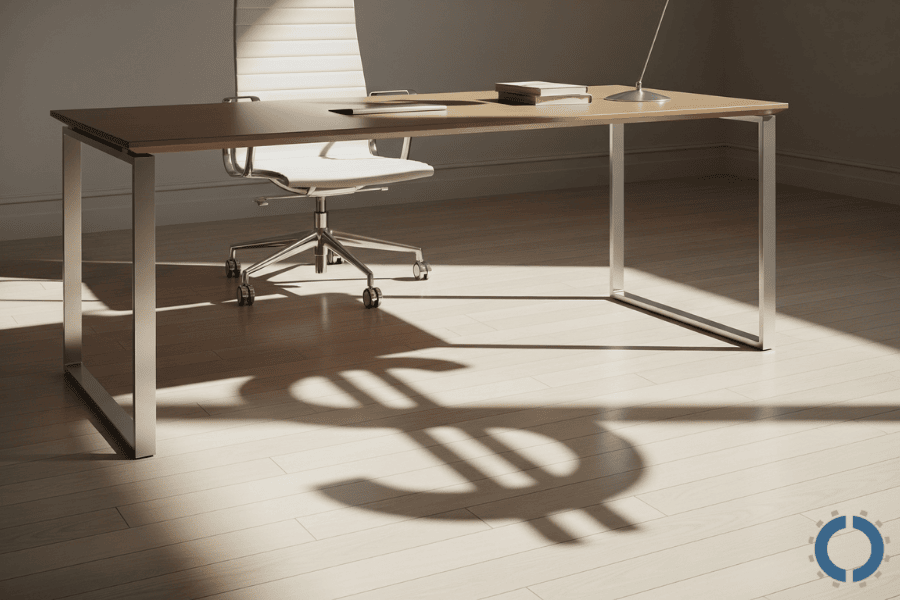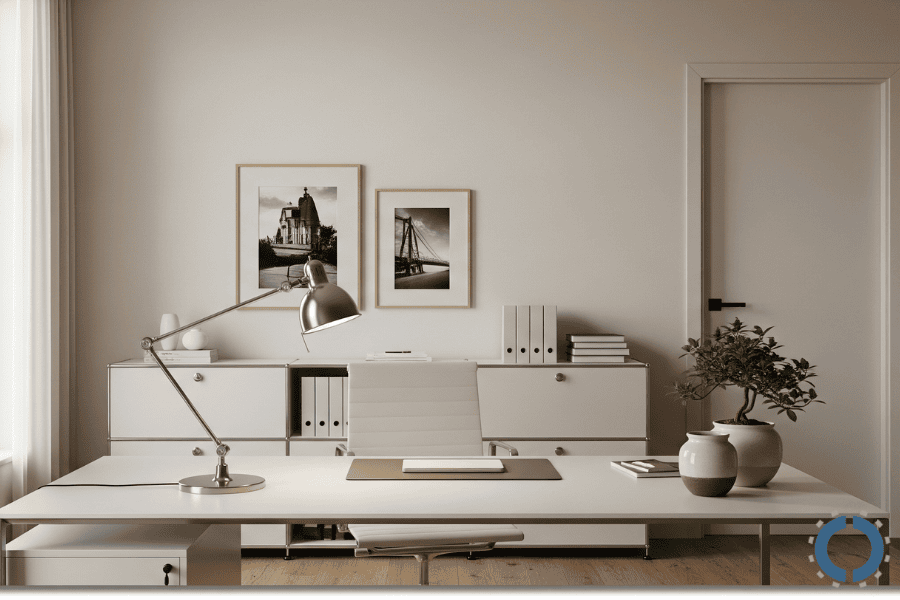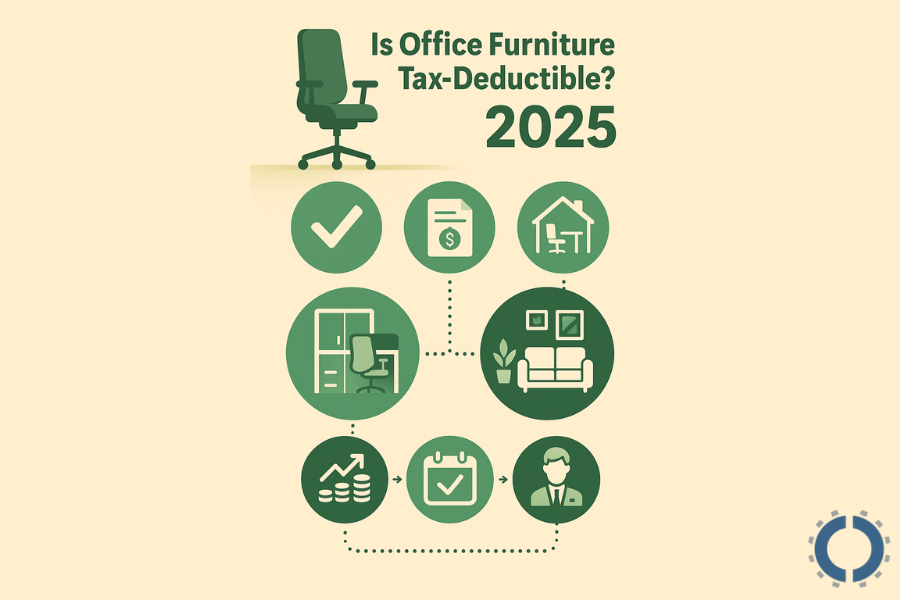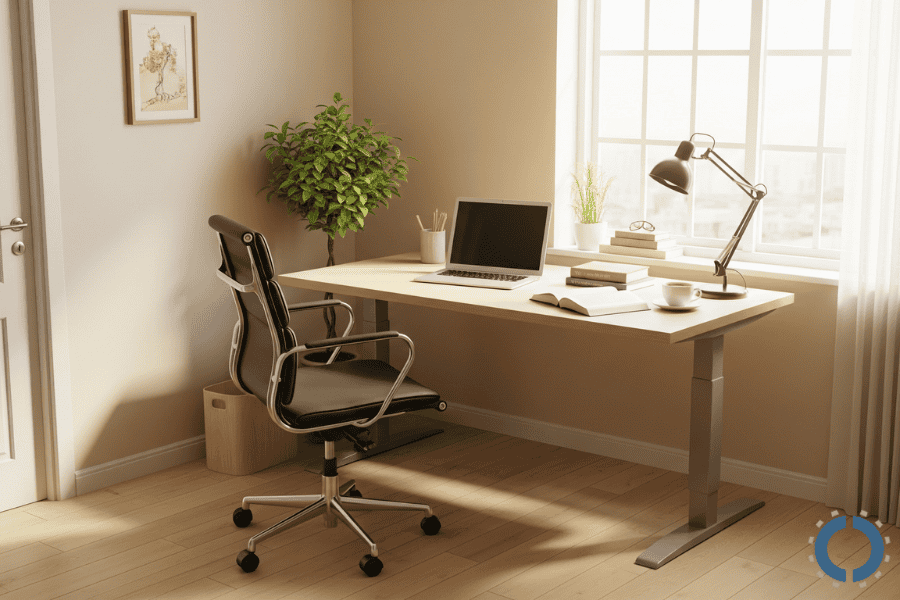Is Office Furniture Tax Deductible? Your 2025 Guide
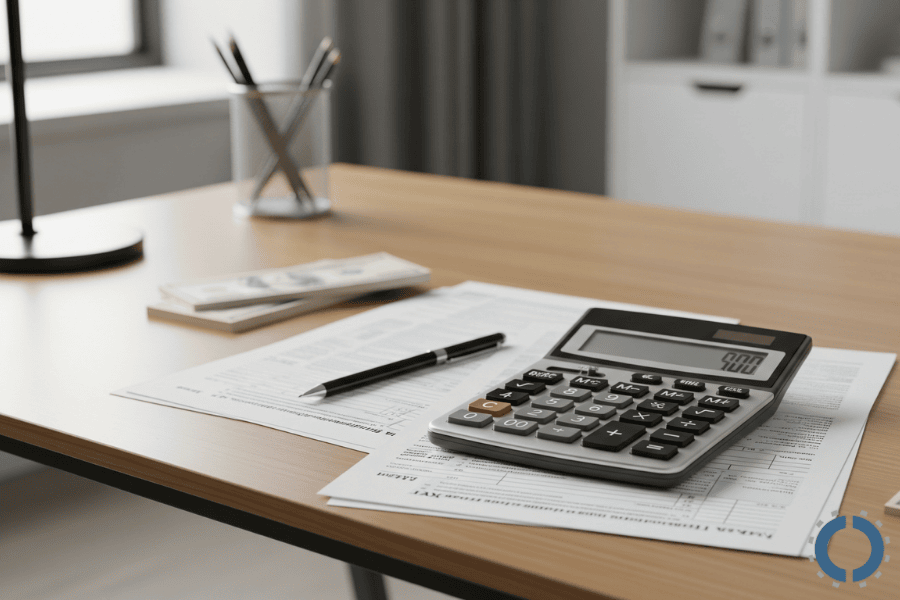
Understanding tax laws is important for business owners, especially in years when new regulatory changes are implemented.
One common question for business owners is: Is office furniture tax-deductible in 2025?
Yes, office furniture is tax-deductible for businesses in 2025.
You can typically deduct the full cost in the year of purchase using Section 179 or claim bonus depreciation.
Alternatively, you can depreciate the cost over several years.
If you have a home office, the furniture is deductible if the space is used exclusively for business.
Always keep good records and consult a tax pro.
With the changes to tax laws coming in 2025, awareness of these laws has become more important than ever for businesses large and small.
Proper use of these rules can reduce costs, improve liquidity, and result in significant savings at the end of the fiscal year.
In this article, we take a closer look at how you can take advantage of the office furniture tax deduction in 2025, what methods are available to you, and what tips you should follow for maximum tax efficiency.
General Principles of Deductibility
For an expense to be eligible for tax deduction, it must include the following two important characteristics:
1. Ordinary and Necessary Expenses
- Ordinary: This means that the cost is common and accepted in your industry or field of work.
For example, purchasing tables and chairs for a consulting services firm or a design firm is a normal expense.
- Necessary: This means that the cost is useful and reasonable for doing your business better, faster, or more efficiently.
2. Business Purpose Requirement
Office furniture must be used primarily and exclusively for business activities in order to be tax-deductible.
This means that if you use a desk or chair in the office that is only for your job, the cost is deducted.
But if the same space or furniture is used for personal affairs, only part of the cost may be deducted, which must be proven by accurate documentation.
3. Capital Expense vs. Immediate Deduction
Typically, office furniture is a Capital Asset, as its useful life is more than a year.
As a result, it should be costly over a few years (for example, 7 years) in a depreciation stage.
However, specific rules such as:
- Section 179
- Bonus Depreciation
Allow businesses to complete the full cost of furniture that year.
What office furniture is tax-deductible?
In 2025, a wide range of office furniture and equipment items will be tax-deductible if used solely for business purposes.
Below, we review the most important ones:
- Office Desks and Tables: One of the most important and common tax-deductible items is office desks and tables.
All types of desks, management desks, and reception desks can be subject to tax deductions.
Also, if you have meetings with clients or employees in the office, the conference table and associated chairs are deductible.
- Office Chairs: All types of ergonomic office chairs Houston, whether on wheels or fixed, office chairs, waiting, and lounge chairs are all tax-deductible.
Even a guest chair can be deductible if it is used in a workspace for clients or visitors.
- Filing Cabinets and Storage Units: Sliding cabinets for storing documents, and wall or floor shelves for placing tools or work equipment are also among these items.
- Office Partitions and Dividers: Office partitions and dividers, such as demountable walls, are tax-deductible due to their purely commercial use and multi-year useful life.
- Cubicles and Workstations: Office cubicles Houston and workstations are important equipment in organizing the workspace, which are recognized as capital assets and are subject to tax deductions.
- Office Appliances: Includes appliances such as a mini-refrigerator, microwave, coffee maker, and water cooler.
These items are only deductible if they are solely for work and employee, or business use.
Items That Are Not Deductible
While many office equipment and furniture items are tax-deductible, some items are not included in this exemption for specific reasons.
These items are usually excluded from tax deductions due to their personal use, limited application, or consumptive nature.
- Personal or decorative items: Items such as art, decorative vases, or houseplants whose primary purpose is to beautify the environment and do not play a direct role in business performance or productivity are generally not tax-deductible.
- Office supplies: Items such as paper, pens, staplers, printer ink, and other small everyday items, because they are regularly used and replaced, are recorded as current expenses rather than long-term assets and are usually accounted for through ordinary deductions rather than as furniture or capital assets.
- Home furniture used in a home office: If the home furniture is used in a home workspace and that furniture has a combination of personal and business use, only the portion of its cost that is proportionate to business use may be deductible.
However, if the furniture is purchased solely for personal use in the home, no part of it will be subject to a tax deduction.
Tax Deduction Methods for Office Furniture in 2025
1. Section 179 Deduction
Section 179 is a special tax benefit for businesses that allows the entire purchase price of qualified office equipment or furniture to be fully deductible in the same year of purchase.
This means that instead of depreciating the cost of furniture over several years, you can record the entire cost as a deductible expense in the same year of purchase.
Of course, this law also has a number of limitations!
For example, for tax year 2025, the maximum amount deductible under Section 179 is $1,250,000.
This means that if your business spent, for example, $200,000 on office furniture during the year, you can deduct that $200,000 in full from your taxes that same year.
If a business’s total purchases exceed this limit, the office furniture tax-deductible amount will be reduced.
These changes, compared to previous years, can lead to significant financial savings and tax burden optimization, especially for small businesses with moderate capital expenditures.
2. Bonus Depreciation
Bonus depreciation is a tax option that allows businesses to deduct a higher percentage of the cost of a qualifying asset in a lump sum in the same year it is purchased and used.
Bonus depreciation is a tax option that allows businesses to deduct a higher percentage of the cost of a qualifying asset in a lump sum in the same year it is purchased and used.
This method is similar to Section 179, except that it sometimes has different conditions and percentages, and is especially used to quickly reduce tax costs in the first year of purchase.
While the Section 179 deduction is more likely to apply to items that are considered long-term assets, bonus depreciation provides businesses with the opportunity to take immediate depreciation.
3. Standard Depreciation
Standard depreciation is a tax method that allows businesses to deduct the cost of assets, such as office furniture, over a period of several years.
Unlike Section 179 or bonus depreciation, which deducts expenses in one lump sum and quickly, in standard depreciation, the cost of an asset is deducted gradually and based on the useful life of that asset.
This means that if your office furniture purchase does not qualify for Section 179 or bonus depreciation for any reason, you must switch to the standard depreciation method.
Typically, office furniture is depreciated over seven years under US tax law.
In this section, companies are allowed to deduct a portion of the furniture purchase price from their taxable income each year during this period, thereby gradually recording the cost in their financial books.
Note: One thing to keep in mind is that federal tax laws are not necessarily the same as state tax laws.
In some states, there may be different limits or requirements for deducting expenses related to the purchase of office furniture.
There may also be additional taxes imposed at the state level that directly affect the amount of tax deduction available.
So be sure to consult with a tax consultant knowledgeable about state regulations to have accurate information on legal differences between states.
This awareness can help you plan your finances more effectively and take full advantage of potential tax benefits.
Home Office Furniture Deductions
If you use your home as an office, you can include the office furniture costs as business expenses in your tax return.
Of course, tax laws are a bit strict in these cases, and the home office must meet special conditions in order to deduct the cost of office furniture from taxes.
The reason for these restrictions is that in the absence of oversight, some individuals may declare personal use expenses as business expenses, thus unfairly and illegally evading full tax payment.
For this reason, in order to be able to take advantage of the tax benefits related to office furniture, you must clearly demonstrate that the space in question is entirely dedicated to business matters and is not used for non-business purposes.
- Eligibility: If you run your business from a home office, you may be able to deduct the cost of furnishing that space from your taxes.
To do this, the desired furniture should be used only for work.
Also, your home office must be used regularly and exclusively for business activities.
- Criteria: The workspace must be used solely for work and not for personal use, and this use must be continuous and uninterrupted.
Your home office should either be your primary place of business or a place where you regularly meet with clients or customers.
Currently, under current tax laws, self-employed individuals such as freelancers, independent contractors, or small business owners can take advantage of the home office deduction.
Common Missteps and Best Practices
1. Exclusive Business Use
Be sure to only deduct items that are used solely for business purposes.
If furniture is used jointly for work and personal use, the entire amount is not deductible or only a portion of it will be acceptable.
One of the most common mistakes is claiming tax deductions for furniture or items that are also for personal use.
2. Record-Keeping
Keep all receipts, invoices, proof of purchase, and documentation related to the business use of the furniture in an organized and accurate manner.
These documents are vital in the event of an audit by the IRS.
3. Stay Informed
Tax laws, both at the federal and state levels, can change every year.
Keeping up with these changes can prevent errors and tax penalties and help you make the most of your benefits.
Relying on information from previous years or ignoring legal updates is another common mistake business owners make.
4. Consult a Professional
Always consult a qualified tax consultant for important financial decisions, including deducting furniture expenses.
A professional can help you get the maximum deduction possible within the rules.
Conclusion
As discussed in this article, tax deductions for office furniture are only possible if certain conditions are met.
In 2025, office furniture could be used as one of the important opportunities to reduce business tax costs.
By being aware of the general principles of tax deductions, taking advantage of legal benefits such as Section 179, and being disciplined in documenting and recording expenses, companies will be able to intelligently recover furniture purchase costs.
Since tax laws can change every year, staying up-to-date and aware of new changes can help you pay less in taxes and save money.
In general, conscious management of office furniture costs not only optimizes taxes but also strengthens the planning power and financial transparency of the business.
To take full advantage of these benefits, consulting with a tax professional is recommended.

John Ofield is the owner of Collaborative Office Interiors. Houston’s trusted source for premium office furniture, office cubicles, demountable walls, office desks and tables, and complete workspace solutions. With more than 40 years of experience, he combines deep product knowledge with hands-on space-planning expertise to create ergonomic, productivity-focused work environments for businesses across Southeast Texas.

